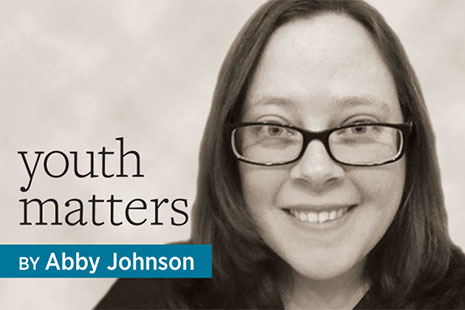
Youth programming at public libraries incurs more costs than just the monetary expenses of hiring a performer or purchasing supplies. We must manage the expense of staff time and take into account the commitment required to plan and run a high-quality program. We must also consider the resource of physical space and decide how to accommodate growing crowds when our meeting rooms and buildings are not expanding.
Hosting a large variety of library programs may be easy when you have enough money, staff members, and space, but what do you do when that’s not the case? How can you stretch your offerings?
Self-directed programming is a great way to provide value while mitigating costs. We’ve all experienced that patron who seems to expect an age-appropriate program for their child on whichever day they drop by. Self-directed activities help us give those audiences something special whenever they visit.
One self-directed program that has been successful at my library is a make-and-take crafts table that we provide over school breaks. We put out supplies and instructions for a craft that appeals to a wide range of age groups. By planning ahead, we can mobilize teen volunteers to prep craft supplies, saving hours of staff time. All that our staffers have to do is refill the supplies as needed. We keep track of how many pieces we have prepared so we can analyze which projects are well received.
Last summer, I set up an engineering table with a different building activity each week. Because summer is a time when even refilling craft supplies can be overwhelming, putting out activities instead of take-home crafts helped alleviate stress and still gave families something creative and engaging. Some of these activities were purchased kits and others incorporated low-cost materials such as pool noodles, clothespins, and recycled cardboard boxes. I strategically chose a mix so that families could engage with formal, ready-made sets they may not otherwise have access to, as well as inexpensive household items that they could most likely furnish or replicate at home. You can find a full list of our engineering table activities at bit.ly/2gM4pWc.
Scavenger hunts can strategically introduce families to areas of the library they may not have used before.
For this type of activity it was impossible for us to capture usage statistics, but we recorded plenty of overheard conversations and anecdotal feedback to present to our director. Our signage also encouraged families to take photos of their creations and post them on their social media accounts with our library’s hashtag, giving us visuals to share with our board.
Another wildly popular self-directed program is the scavenger hunt. These hunts require some preparation, but once they’re set up they mostly run themselves. Caregivers and children can do them any time the library is open, and they don’t require a designated space.
Kids like that we have aligned scavenger hunt themes to pop culture phenomena such as Frozen, Minecraft, and Pokémon. Hunts are not only fun for children and teens, but we can strategically introduce families to areas of the library they may not have used before by situating checkpoints outside of youth departments. We can also use scavenger hunts to cross-market other library services. In a hunt that we held this fall, families had to ask staff members at the children’s, teen, and circulation desks questions in order to receive clues, allowing us to promote our fall reading program and library cards in the process.
Another latent benefit to self-guided programming is worth mentioning: It has the capability to reach shy kids who might not enjoy a traditional program that puts them in a room with other children. Anthony James Baltiero, youth services library associate at Jacksonville (Fla.) Public Library, describes this as passive programming and explains how scavenger hunts and interactive displays work to include this group.
If you’re seeking ways to extend your resources and expand your offerings, explore self-directed programming and see what might work for you.


